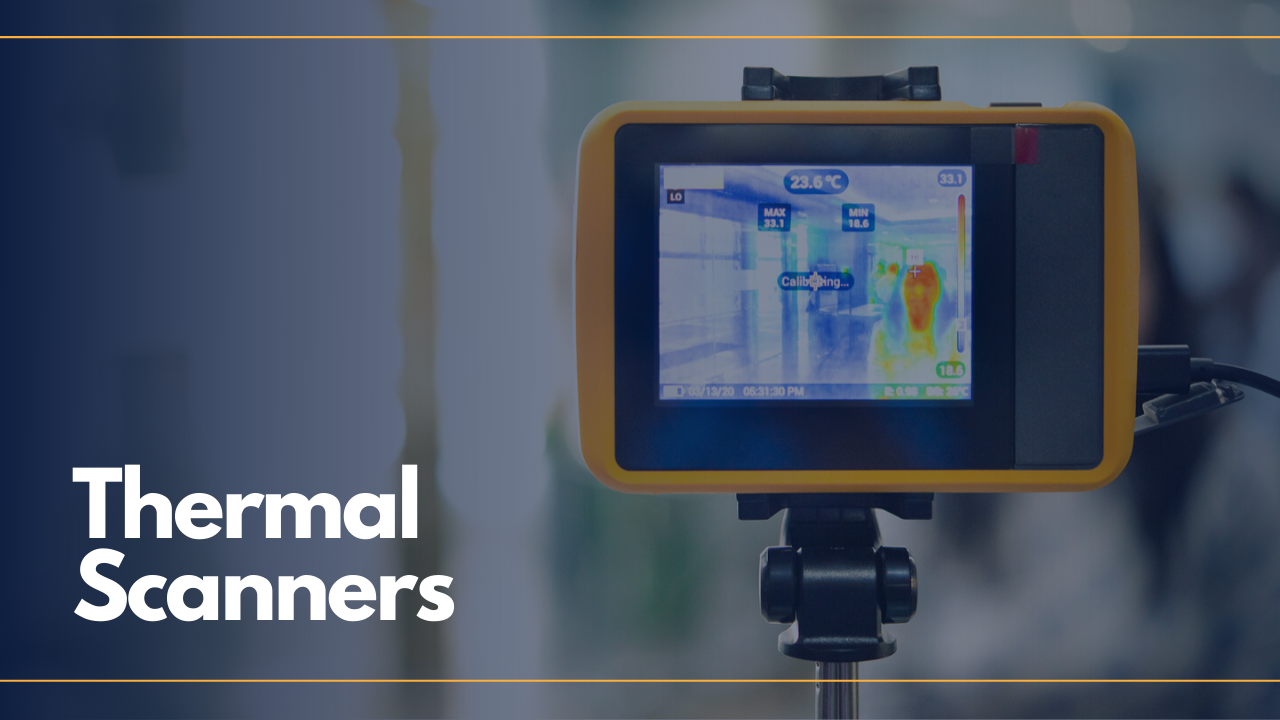- Thermal scanners can detect fever – a key COVID-19 symptom.
- As lockdown restrictions ease, demand for these devices rapidly increases.
- But technical and privacy concerns must be addressed with thermal scanners.
From South Africa’s alcohol and cigarette ban to Sweden’s non-compulsory lockdown, each country’s response to the COVID-19 pandemic sits on a vast spectrum of what is and is not allowed. For many workspaces, restrictions are starting to ease and people are encouraged to return to work, if it’s safe to do so.
The UK Government recommends workers continue to work from home, where possible. If that’s not possible, social distancing must be introduced in the workplace. If that’s not possible, companies should ‘manage the transmission risk’.
That’s a lot of “ifs”, which is understandable considering we do not fully understand many of the basics of COVID-19. But one thing we do understand is that fever is a signature symptom of this disease.
This is where thermal scanners come in.
These devices automatically scan everyone who walks past and measures the heat of an individual’s skin, in an attempt to spot those who have signs of fever.
So, could thermal scanners help protect the world’s workplaces and workers?
Temperatures rising
Thermal scanners are popping up everywhere. Some airports are trialling thermal imaging temperature checks to identify individuals who might be infected with the coronavirus. In the US, temperature checks are being introduced for worshippers and restaurant-goers. A grocery store in Atlanta is even using infrared cameras on its customers.
Big businesses are getting in on the thermal scanning game too. Amazon is reportedly using the technology on its warehouse workers. Apple also told CNBC it intends to check the temperature of customers and staff when its stores start to reopen.
“Companies and communities eager to get back to work have touched off a nationwide gold rush for thermal scanners,” according to a recent report in The Washington Post. Further reports in The Telegraph reveal thermal imaging specialist company Flir has recorded a massive 700% increase in demand for its infrared cameras.
So, have we found a technical solution to stop COVID-19 entering the world of work?
Not quite.
Thermal scanners are not a panacea as we continue to ease our different lockdown restrictions.
“Industry veterans say the frenzy also is stirring up confusion and leading some small businesses and public officials to spend heavily on cameras without understanding their limitations — namely, that they’re not very good at actually detecting infections,” the Washington Post report also states.
This is an important point. Further reports from WIRED magazine state: “The FDA says infrared thermometers and cameras can be an accurate way to check for a fever. But temperature checkpoints may not provide much protection from COVID-19 in workplaces or other venues, even when combined with health questionnaires.”
“Countries that set up checkpoints at ports to screen for fevers or other symptoms during SARS, Ebola, and swine flu outbreaks had little success at keeping out infectious people. What’s known about the novel coronavirus suggests temperature screening will have little impact during the much larger COVID-19 pandemic.”
Not foolproof
The technical limitations of thermal scanners are clear when it comes to COVID-19, which is something Flir and its competitors are careful to emphasise. Recent reports from Reuters state: “The camera makers caution that their devices are a first screening step rather than a foolproof fever-detection system.”
“Thermal cameras do not measure absolute temperature but rather the difference in energy emitted between one object and another. The systems require regular re-calibration, for example, to handle a factory shift that begins on a cold morning when workers are filing in from outdoors versus an afternoon shift when the sun has warmed the surroundings.”
Technical issues aside, what about the wider privacy concerns surrounding thermal scanners?
Biometric proponents claim such technologies provide a seamless member experience for shared workspaces. However, if thermal scanners are installed in your shared workspace, you may need to rethink your guidelines around privacy and surveillance.
Some argue that thermal imaging cameras are “dangerous dragnet surveillance cameras”. Others question whether your body temperature really is a piece of private information in the first place?
Whatever side of the fence you sit on, these privacy concerns will need to be addressed, if thermal scanners are installed at shared workspaces and if they’re any good at detecting COVID-19 in the first place.
Again, that’s a lot of “ifs”.
With such systems costing thousands of dollars, you may want to wait before joining a fool’s gold rush for thermal scanning cameras – or you could find yourself in hot waters with your members.


 Dr. Gleb Tsipursky – The Office Whisperer
Dr. Gleb Tsipursky – The Office Whisperer Nirit Cohen – WorkFutures
Nirit Cohen – WorkFutures Angela Howard – Culture Expert
Angela Howard – Culture Expert Drew Jones – Design & Innovation
Drew Jones – Design & Innovation Jonathan Price – CRE & Flex Expert
Jonathan Price – CRE & Flex Expert












